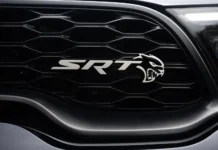
Tariffs on three major U.S. trade partners went into effect Tuesday — with profound impacts on the horizon.
After a last-minute, 30-day pause in early February, the Trump administration enacted new tariffs on China, Canada and Mexico. For the automotive industry, the 25% import levies taking hold on goods imported from Canada and Mexico are about to increase costs by several thousand dollars for U.S. consumers, according to automakers and analysts over the past several weeks.
According to a report from the Anderson Economic Group (as reported by CBS News), the most extreme impacts could increase bottom-line prices by up to $12,200 for some models. With average transaction costs already skirting the $50,000 mark, the largest increases will land on popular SUVs, trucks and electric vehicles with higher MSRPs. Even still, though, some smaller and more affordable cars won’t escape price hikes either.
More than 30 different vehicles undergo final assembly in either Canada or Mexico, with countless suppliers besides manufacturing parts that go into full vehicles throughout North America. Last month, we covered the complete vehicles that, as of this point in time, are manufactured both north and south of the border. Here’s that information again, for reference:

U.S. market cars assembled in Canada
| Model | Assembly Location | Current MSRP* (as of February 2025 – before tariffs) |
| Chrysler Pacifica | Windsor | $42,450 |
| Chrysler Voyager | Windsor | $39,995 |
| Dodge Charger | Windsor | $59,595 |
| Ford Mustang GTD (Multimatic) | Oakville | $300,000+ |
| Honda Civic Sedan | Alliston | $24,250 |
| Honda CR-V | Alliston | $30,100 |
| Lexus NX | Cambridge | $42,140 |
| Lexus RX | Cambridge | $50,325 |
| Toyota RAV4 | Woodstock | $28,850 |
U.S. market cars assembled in Mexico
| Model | Assembly Location | Current MSRP* (as of February 3, 2025) |
| Audi Q5 | San José Chiapa | $45,400 |
| BMW 2 Series Coupe/M2 | San Luis Potosí | $39,600 (M2: $65,500) |
| BMW 3 Series | San Luis Potosí | $45,950 |
| Cadillac Optiq | Ramos Arizpe | $54,895 |
| Chevrolet Blazer (& EV) | Ramos Arizpe | $35,400 (EV: $48,800) |
| Chevrolet Equinox | San Luis Potosí | $28,600 |
| Chevy Equinox EV | Ramos Arizpe | $41,900 |
| Ford Bronco Sport | Hermosillo | $29,795 |
| Ford Mustang Mach-E | Cuautitlán Izcalli | $39,995 |
| GMC Terrain | San Luis Potosí | $30,000 |
| Honda HR-V | Celaya | $25,400 |
| Honda Prologue | Ramos Arizpe (GM) | $47,400 |
| Infiniti QX50/QX55 | Aquascalientes (w/ M-B) | $43,000 |
| Jeep Compass | Toluca | $26,900 |
| Jeep Wagoneer S | Toluca | $70,795 |
| Mazda 3 | Salamanca | $23,950 (sedan) |
| Mazda CX-30 | Salamanca | $24,995 |
| Mercedes-Benz GLB-Class | Aquascalientes (w/ Nissan) | $45,800 |
| Nissan Kicks | Aquascalientes | $21,830 |
| Nissan Sentra | Aquascalientes | $21,590 |
| Nissan Versa | Aquascalientes | $17,190 |
| Volkswagen Jetta | Puebla | $21,995 |
| Volkswagen Tiguan | Puebla | $28,880 |
| Volkswagen Taos | Puebla | $24,995 |
By and large, analysts predict new vehicle prices will rise between $4,000 and $10,000, though the disruption of supply chains for parts — again, including those set up for vehicles assembled in the United States — are “likely to see negative consequences” from these newly enacted tariffs.
No tariffs on Japanese, Korean, or European vehicles provide an alternative — at least for now
Manufacturers and customers alike could well scramble to avoid new tariffs in the coming weeks as disputes between the U.S. and its trade partners escalate. Some, as analysts point out, could (at least temporarily) avoid buying a new vehicle altogether, due to the cost.
There is one momentary reprieve for prospective buyers: And that is to buy vehicles assembled in Japan, Korea or Europe. So long as those nations don’t also face tariffs in the near future — President Trump has threatened to do so in recent days (report per CNBC) — those manufacturers may experience a surge in sales by virtue of importing vehicles from those countries not currently subject to 25% tariffs.
So, where will this all go? We’ll have to wait and see, as some manufacturers are reportedly shifting production plans to manufacture more vehicles in the U.S. General Motors, for example, reportedly planned to shift some truck production from Mexico back to the U.S. when Trump first threatened tariffs upon taking office in January. Honda also reportedly scrapped a plan to move Civic Hybrid production to Mexico from Indiana and Ontario, Canada (where it currently splits some Civic and CR-V production for the North American market) avoid even higher costs from new import levies. At this point, Honda has not directly confirmed that, but it’s entirely plausible given the response writ large to the administration’s aggressive economic strategy.
The Biden administration previously imposed a 100% tariff on imported Chinese electric vehicles — intended to block automakers over there from accessing the U.S. market, or at least making it prohibitively expensive to do so. Some familiar automakers that planned to import Chinese-built EVs into America, like Volvo, have since shifted production bound for the North American market to South Carolina or its European manufacturing facilities.


























